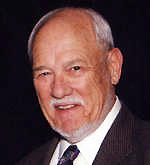 By ANDY ANDREWS
By ANDY ANDREWSWorld Futures Institute
Welcome to 2019 and another year on planet Earth. It is the annual time period when we look forward to either new opportunities or suffer the pessimism of not seeing any.
Where are we going as a planet (our life supporting environment) or as humanity (the order of our existence and how we work together)? For example, I believe that we all need energy to lead our lives and sustain humanity. But from where does it come? This question has led to many heated (flaming?) debates influenced by individual perspective – where you are and what you need. Is it an individual or collective perception of need?
In the “news” today we are bombarded with various statements, some friendly, some unfounded, and some really hostile. When engaging in these “discussions,” we should be trying to understand the perspective or our competitor, what does he or she both want and need. And since we argue, debate, and fight with words, what do the terms really mean? For example, what is the difference between socialism and capitalism?
From my background and perspective, capitalism was defined by Adam Smith in 1776 in his opus The Wealth of Nations. It is all about the individual being able to create his or her own wealth. It is about starting companies and businesses that make (earn) money and all of the profits belong to the individual or are shared among the collective individuals that own the company. It is about creating things and being rewarded for their development. But the capitalists are not totally free to do anything they want. The society (the state or nation) establishes and imposes rules that must be followed: you cannot open a gambling casino anywhere you want; you cannot manufacture, sell, and distribute products deemed to be illegal; and you must respect the physical and intellectual property of other businesses. The list can go on, defined by the laws and regulations of the nation-state. It is emphasized that this is about private ownership albeit regulated by the “government.” But what if the government is the owner?
Wait, you say. The government does not own businesses! Yet they do.
Consider municipalities that provide electricity, natural gas, water (and trash collection). In such municipalities, the government is operating a monopoly. It is a government owned business where any profits that accrue (usually negative) belong to the citizens. This is state capitalism even though it is sometimes called socialism. You can thank Joseph Stalin for this.
Some other examples of state capitalism include Amtrak, the Tennessee Valley Authority, the post office, and public colleges and universities. In some countries other than the United States, there are state-owned businesses actually manufacturing things such as Neftekamsk Automotive Plant in Russia with 32,000 employees. While a private company, 28 percent of it is owned by the Republic of Bashkortostan (essentially a state of Russia). Or consider China. The top 12 Chinese companies are state-owned and include very large banks and oil companies. The key point is that the CEOs are appointed and investment decisions are made by the government.
Do these “state owned” businesses make a profit? Yes they can. Neftekamsk makes busses and dump trucks and, according to Wikipedia, turned a profit in 2017. Going back to 2012, sales of goods and services was 10 billion 59 million rubles or around 150 million dollars. Did the workers share in the eventual profits?
One can argues that since the state uses the profits for the “good” of the people, indirectly they do. And since the state owns the business, the citizens own the business. But the workers themselves have no say in the direction and management of the company. There is a state appointed boss.
In contrast, in a socialist company the distinction between employers (bosses and employees (workers) vanishes. No one can tell the worker how to do his or her job unless it is done by the other workers collectively. Then, assuming the sale of a wanted product, the profits are evenly distributed. Since efficiency and profitability demands an operational structure, a “boss” chosen by the workers would likely emerge but only for directing operations. Could this work for General Motors with 180,000 employees and producing 9 million plus vehicles a year? The company must compete with other companies and decisions are influence by the competition. In like manner, every nation-state is in competition. Can all the decisions be made socially? Was Stalin right in declaring Russia’s state capitalism made it a socialist nation? For that matter, what is socialism?
Until next time….
The Los Alamos World Futures Institute website is at LAWorldFutures.org.
Feedback, volunteers, and donations (501.c.3) are welcome. Email andy.andrews@laworldfutres.org or bob.nolen@laworldfutures.org.

